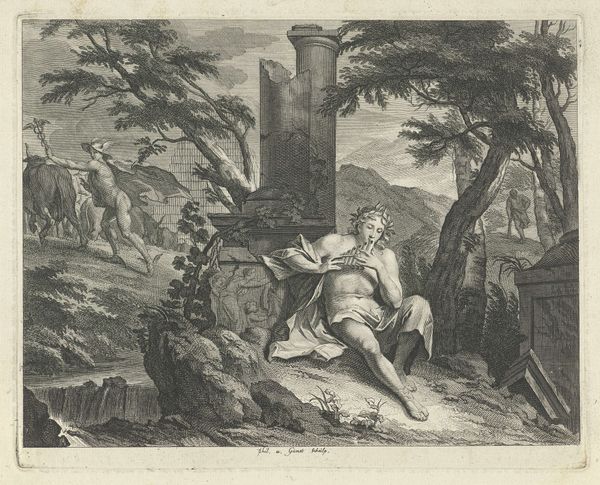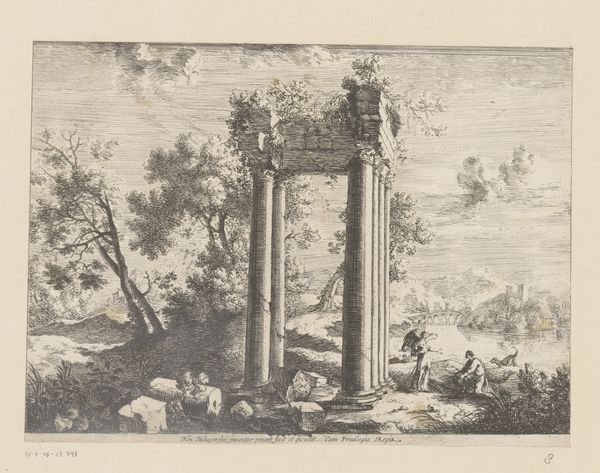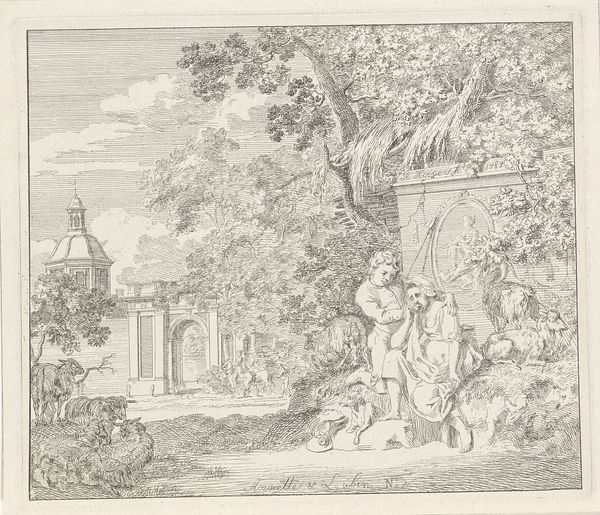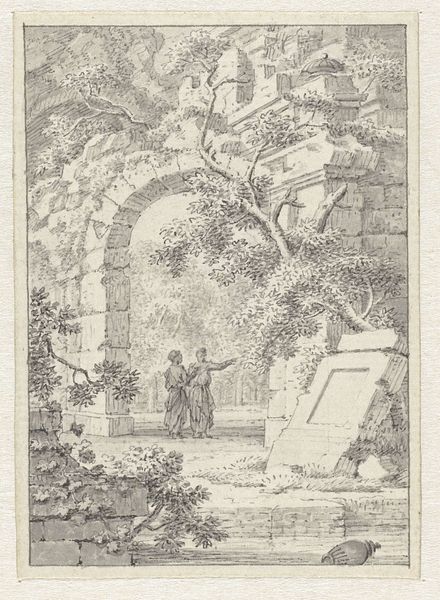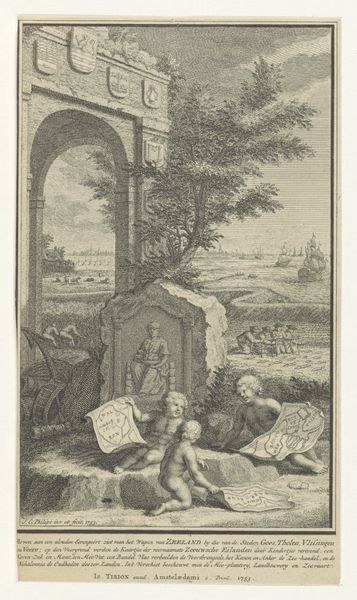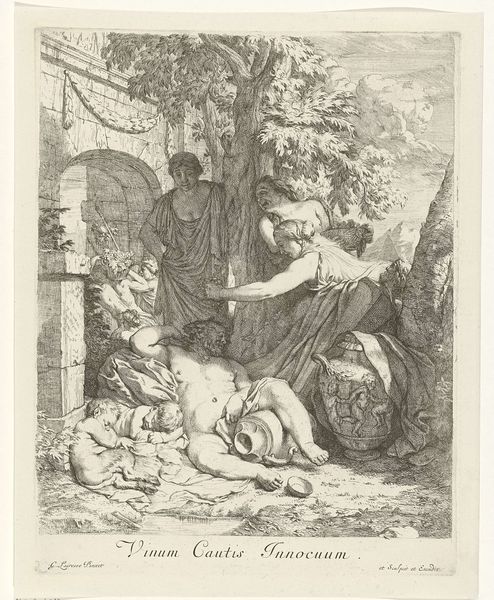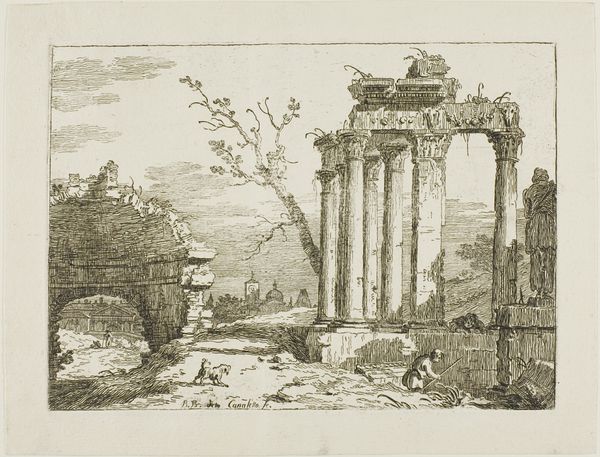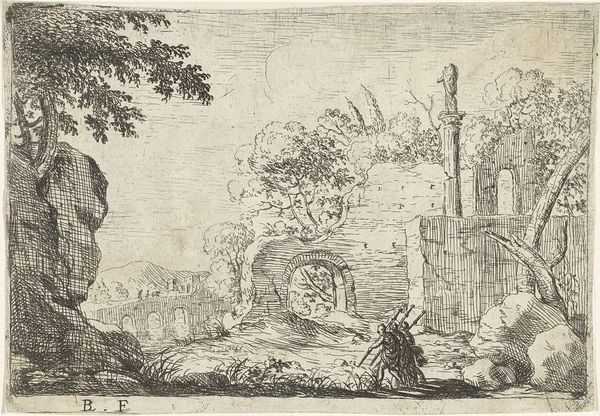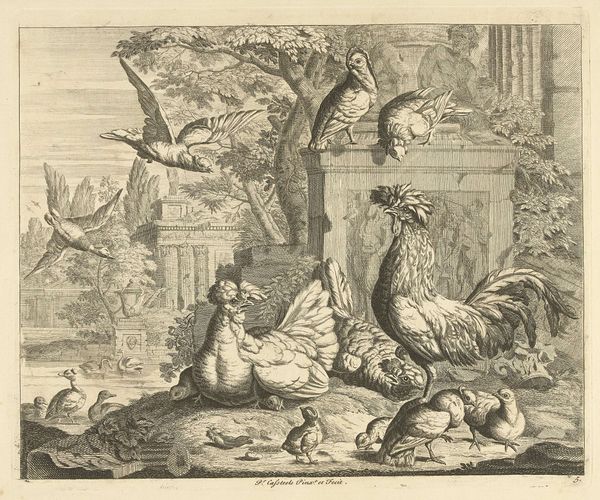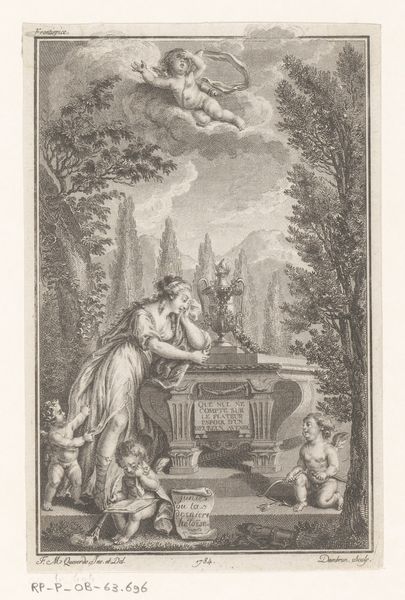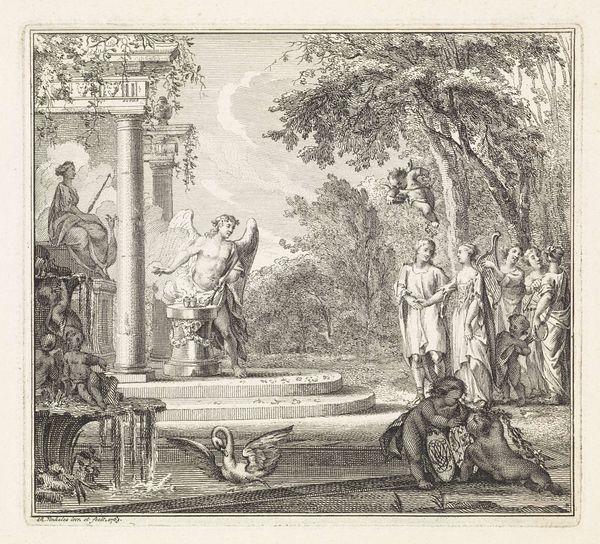
print, engraving
#
neoclacissism
# print
#
pen sketch
#
pencil sketch
#
old engraving style
#
landscape
#
figuration
#
line
#
history-painting
#
engraving
Dimensions: height 86 mm, width 125 mm
Copyright: Rijks Museum: Open Domain
Editor: This is "Minerva en een putto met een lier bij ruïnes," an engraving by Reinier Vinkeles from 1778. It's filled with classical imagery. The ruins and the figures give it a sense of a lost world. What do you see in this piece? Curator: I see a dialogue between the past and the present, a hallmark of Neoclassicism. Minerva, goddess of wisdom, stands amidst ruins with a putto, a symbol of innocence and potential. But look closer - what does it mean to idealize this past while standing on the literal crumbling foundation of it? Editor: It almost feels like a staged scene, with the classical elements arranged for a specific effect. Curator: Exactly! Consider the sociopolitical context: the late 18th century was a time of upheaval, with Enlightenment ideals challenging established power. Neoclassical art, in its return to perceived classical "values", becomes a tool. But whose values are being elevated, and whose are being erased in this idyllic vision? Think about who had access to these kinds of idealized landscapes. Editor: So it's not just about aesthetics, but also about power? About who gets to define beauty and the ideal society? Curator: Precisely! And whose stories get told or ignored in the face of these 'classical' narratives. Who benefited? Editor: It’s fascinating to think about how art can reinforce or challenge societal structures. I will definitely look into this more. Thanks. Curator: Absolutely! Keep questioning, keep connecting the art to the world around it.
Comments
No comments
Be the first to comment and join the conversation on the ultimate creative platform.
